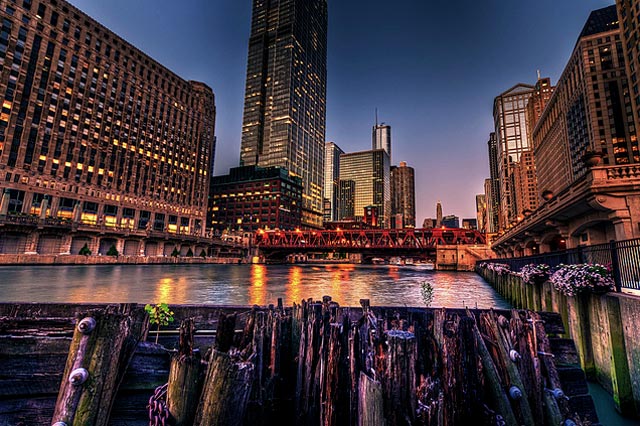Bright Lights, Big City, Bigger Revenues?
By JoshMogerman in News on Jan 26, 2014 8:15PM
It is cold outside, but Mayor Rahm Emanuel is thinking a lot about vacations. Namely, how to get folks to take them here. Last year was spectacularly good for the city’s tourism economy. But not good enough for the mayor, who announced the goal of increasing tourism by a whopping 9 million visitors over last year’s record numbers.
And what will tourists see when they come here? Apparently, a lot of lights:
“…[L]ater this month the city will launch an international competition to light the city at night. The competition will seek entries from artists, architects, planners and designers from around the world. It will begin with the river and extend throughout the city and will activate Chicago at night, allowing tourists more opportunities to enjoy the city and presenting another reason for people to visit Chicago.”
Such a plan naturally has tongues wagging. Even as Sun-Times headline writers dubbed this a “Bright Idea” (get it?), the paper’s City Hall reporter, Fran Spielman, applied a quick wet blanket by invoking issues of cost and questions about whether drenching downtown in lights undercuts the strong work being done to reduce energy consumption in government and large commercial buildings.
More interesting is a critique that the real “City of Lights,” Paris, France, has decided to tone down its illumination on fiscal and environmental grounds.
Unsurprisingly, the most thoughtful take comes from Lynn Becker over at Architecture Chicago Plus blog. Becker floats an interesting alternative project:
…Wabash Avenue has traditionally been considered the problem child of the Loop because of its falling beneath the shadow of the Loop L. Most recently, the Chicago Loop Alliance, in partnership with Civic Artworks - has been soliciting ideas for their campaign, How Would you improve Wabash Avenue?The primary answer has always been obvious. Stop trying to ignore the L and start looking at it. Ultimately, the Loop L is not just historic infrastructure - it's the largest piece of sculpture in Chicago. Take the time to look at the pillars, girders, trusses and struts, and you'll find amazing, intriguing and - yes - beautiful webs of form. It's like an enormous Richard Serra, with delicacy and detail added in.
This isn't just a tourist thing. It's about countering the drear cold darkness of winter in the city, and bringing out the best in its architecture and infrastructure even at night. Yes, Chicago - it's schools and government institutions - need bread, desperately, but no city survives without the circuses that give the heightened sense of life that makes people want to live there.
To Becker’s point: people come to cities because they are great cities. Do global tourists head to Hong Kong just to see the nightly skyline light show? No. But no doubt it funnels cash once they come, which is why we are not pooh-poohing this idea yet. Events can draw folks to our fair metropolis; those cows still reverberate, but we didn’t exactly catch lightning in a bottle with the furniture follow-up. Also of note is that the lights proposal comes on the heels of the city’s announced partnership with Redmoon Theater, which strikes us as a move that may garner global interest.
So while global interest is important, investments to draw tourists can and should make life better for the locals, too. The question here is whether brightening buildings will be an amenity for Chicagoans, something we embrace and love—or just something that becomes an annoyance for workers in the Loop, offsetting great work being done on energy efficiency downtown and a magnet into which migrating birds crash.
